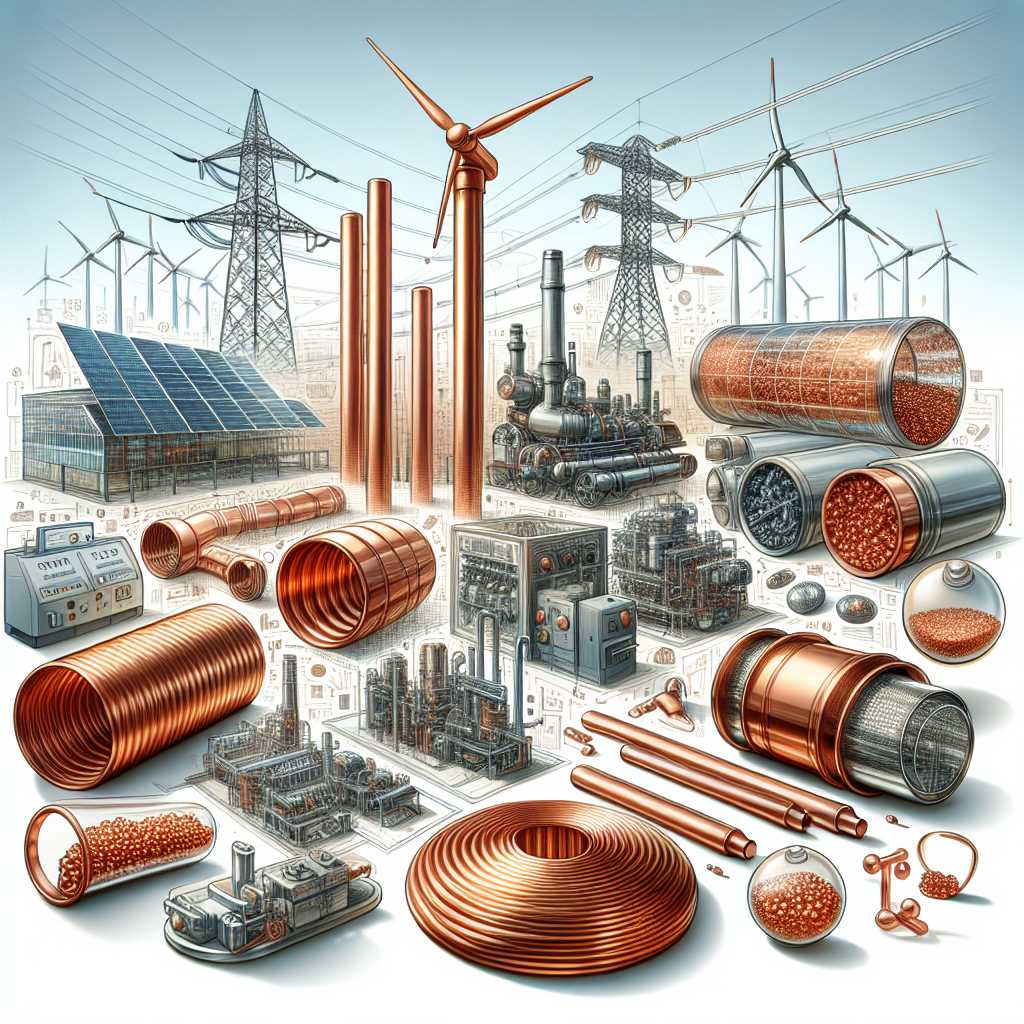The Comprehensive Guide to Copper: An Essential Metal in Human Civilization
Copper, a lustrous, red-orange metal, has been intertwined with human history for thousands of years. Its properties, uses, and significance in various sectors such as electronics, construction, and energy have solidified its status as one of the most versatile and important metals in the world. This article endeavors to present an in-depth look at copper, exploring its characteristics, applications, global market, issues in mining and sustainability, and its role in innovation.
Copper’s Characteristics and Properties
Copper is known for its exceptional conductivity of electricity and heat, making it a critical material for electrical wiring and electronics. Additionally, it has a high level of ductibility and malleability which means it can be easily worked into wires or sheets without breaking. It also shows considerable resistance to corrosion, which is why copper and its alloys are employed to make durable goods and long-lasting structures. Furthermore, copper has antimicrobial properties that are increasingly becoming recognized for public health applications.
Historical Context of Copper Usage
Copper’s history can be traced back over 10,000 years. Early civilizations discovered that copper could be hardened with tin to create bronze, kickstarting the Bronze Age. During this period, copper was utilized for tools, weaponry, jewelry, and as a form of currency. Throughout history, its application has evolved but always remained as a reliable resource for human advancement.
Modern Applications of Copper
In contemporary times, copper’s use extends across various sectors. In electrical engineering, it is indispensable for the wiring and components due to its conductive capabilities. Copper plumbing pipes and HVAC systems showcase its thermal properties and resistance to corrosion. In sustainable energy sectors such as solar and wind power generation, copper is key to efficiently transmitting the generated power.
Copper in Architecture and Medicine
The influence of copper also extends to architecture where its beauty and durability offer both functional and aesthetic edges. Artists have used copper for sculptures and artisans incorporate it in design elements within indoor and outdoor structures. On the medical front, copper surfaces are used in healthcare facilities due to their natural ability to destroy a wide range of harmful microbes.
Global Copper Market Analysis
As industrialization progresses globally, the demand for copper has seen substantial growth. The largest producers include Chile, China, Peru, and the United States. China’s economy significantly impacts copper prices due to its massive consumption as it continues to urbanize. The global market movements are pivotal to economic decision-making in industries dependent on copper.
Challenges in Copper Production and Sustainability
Mining copper brings environmental challenges such as land degradation, water pollution and ecological disturbance. Additionally, concerns over finite copper reserves accentuate the importance of recycling and searching for alternative solutions or materials that could substitute for or complement the metal’s functions.
Copper Recycling Initiatives
To address sustainability concerns, large-scale copper recycling efforts are underway. Since the metal can be recycled without losing its properties, recycling not only helps meet the copper demand but also decreases the environmental footprint of production. Initiatives around the world seek to improve recycling rates and technologies.
Innovation Involving Copper Technologies
Copper continues to play a pivotal role in technological advancement with ongoing research into improving its applications in emerging areas like nanotechnology and superconductivity. This innovation potentiates new uses of copper which could revolutionize several sectors such here as renewable energies and materials science.
